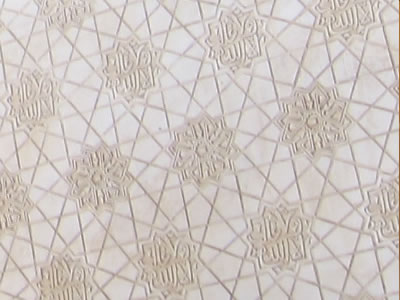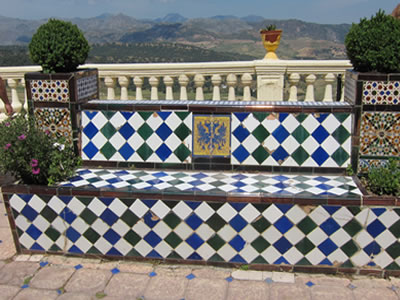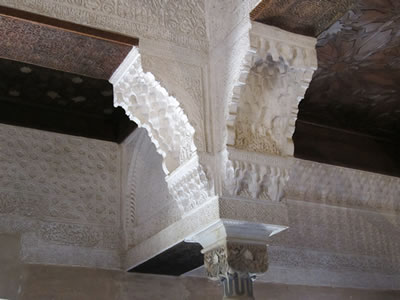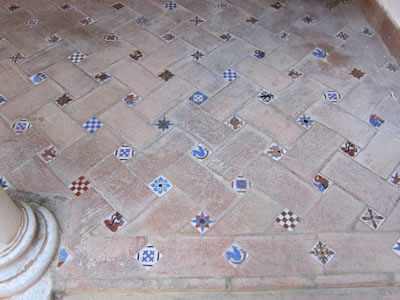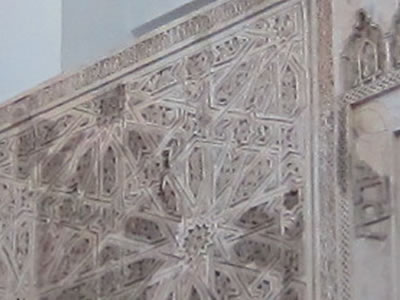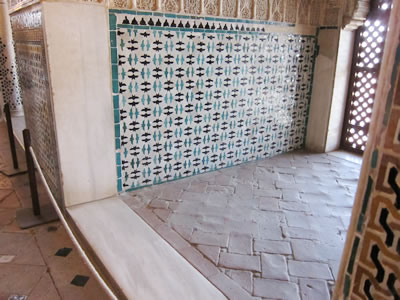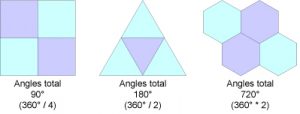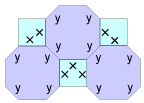Overview of Archives for Charles Austin Beard, Mary Ritter Beard, Miriam Beard Vagts, and Alfred Frederick Vagts
The American historians Charles Austin and Mary Ritter Beard, as well as their daughter, Miriam Beard Vagts, and son-in-law Alfred Frederick Vagts, were prolific published authors as well as correspondents and researchers. Their papers and other works are distributed throughout various archives in both the U.S. and in Europe. Because they were close-knit and frequent collaborators, their archives are intertwined; therefore, a thorough investigation of any aspect of their lives requires review of materials in multiple repositories. The following summarizes known repositories of their papers.
Any archival material that is used or reproduced in another work would properly cite the work as well as its source, regardless of whether an explicit permission is required. It is best practice to ask the source archive how it likes to be listed and to follow its stipulations for credits. Crediting the names of archivists or librarians who assisted you is encouraged. If a work is made available under a Creative Commons License, please take note of the expectations of that license.
Every archive has different policies regarding access and use of archival contents. Some hold both copyright and permissions rights; with others, you may need to contact the authors’ estate representatives (which may include collaborators and correspondents who are unrelated to the Beards or Vagts). If you seek permissions and copyright information for the Beards and Vagts papers where the archives cannot provide it, please email
me as the Family Representative
| Archive | Contents Overview |
|---|---|
| Charles & Mary Beard Archives DePauw University Archives & Special Collections DePauw University Greencastle, IN | Primary archive for the Beards, housed at their alma mater, with works donated by their children and grandson. Includes publications by and about the Beards, correspondence, and pictures, a number of which are posted in the DePauw Digital Library. |
| Papers of Mary Ritter Beard, 1935-1958; Schlesinger Library Harvard University Cambridge, MA | Documents primarily focusing on Mary Beard’s work with the World Center for Women’s Archives. Other Schlesinger collections may contain items related to Beard. The library also houses many monographs by or about Beard. |
| Sophia Smith Collection, Special Collections Smith College Northampton, MA | Mary Beard’s work related to World Center for Women’s Archives (WCWA) as well as materials related to Beard’s interest in the status of Japanese women. Complements holdings at the Radcliffe Schlesinger Library. |
| Charles Austin Beard collection, 1911 – 1976 Columbia University Archives New York, NY | Primary materials, including letters, manuscripts, and printed materials, related to Charles Beard’s work. The University Archives contains other collections related to Beard. |
| Charles Austin Beard letters, 1929-1939 Columbia University Archives New York, NY | Correspondence between Charles Beard and George S. Counts as well as with other parties. Columbia also has made available an online version of Beard’s Ph.D. thesis. |
| Florence Woolsey Hazzard papers Division of Rare and Manuscript Collections, Cornell University Library Ithaca, NY | Correspondence between Mary Beard and a psychologist/historian. Other collections listed on this page contain exchanges between Beard and Woolsey. |
| Japanese Women in Politics after World War II Collection Bryn Mawr Archives Bryn Mawr, PA | Materials collected by Mary Beard and Ethel Weed related to the status of women in Japan during the post-World War II era. |
| National Woman’s Party. “National Woman’s Party Records, 1850-1975.” Manuscript Division Library of Congress Washington, D.C. | Multimedia archive of documents containing correspondence and images of Mary Beard during the suffrage period. |
| Archives & Special Collections New School New York, NY | Materials related to Charles Beard’s role in co-founding of the school (formerly the New School for Social Research). |
| Archives & Manuscripts New York Public Library (NYPL) New York, NY | Various collections containing materials related to the Beards’ activities. These include the Fannia M. Cohn papers; the Rand School of Social Science; Dept. of Labor Research records; and the Rosika Schwimmer papers. |
| Callaghan Library Ruskin College Oxford, UK | Materials related to the Beards’ role in co-founding the school (formerly Ruskin Hall). |
| Institute of Public Administration (IPA) records Baruch College Archives New York, NY | Materials related to the Bureau of Municipal Research, a forerunner of the IPA, and of which Charles Beard was a director and faculty member. |
| Alfred Vagts Archive German Bundesarchiv (Federal Archives of Germany) Koblenz, Germany | The Bundesarchiv’s online portal provides access to various sources containing the works of Alfred Vagts, military historian, war poet, and Dadaist. Most content is in the German language. |
| Yale University Archives New Haven, CT | Materials relating to Alfred Vagts’ connections to historian Hajo Holborn, the German Dadaist movement as well as Vagts’ notebook of his experience at Yale as the first post-World War 1 exchange student from Germany. |
| Leo Baeck Institute Center for Jewish History New York, NY | Books and papers by Alfred Vagts related to German-Jewish history. |
| American Heritage Center University of Wyoming Laramie, WY | The Center has materials from 1939 thru 1945 related to Alfred Vagts’ World War II writings and work at the U.S. Office of Economic Warfare as well as resources relating to the Beards, including collections of materials by Harry Elmer Barnes; Thomas C. Kennedy; and George Morgenstern. |
| Historical & Special Collections Harvard Law School Library Cambridge, MA | Papers of Detlev F. Vagts, the only child of Alfred and Miriam Vagts and an authority on transnational law. Contains correspondence related to his parents and grandparents. |
Possible additional archives may be found at the following sources:
- WorldCat – This catalog of library catalogs enables searching on thousands of library catalogs worldwide. The Advanced Search feature allows you to restrict your search results to Archival Material as the Format, or Thesis/dissertation as the Content Type, and any Beard or Vagts as a subject, author, and/or keyword.
- ArchiveGrid – A search engine for archives based on WorldCat data alongside an interactive map. An effective tool for locating archives focusing on others but which contain the occasional mention of a particular subject.
- National Archives (American) – A useful source of miscellaneous documents that mention the subjects.
- Google Books – Index of not only mainstream books but also “grey literature.” Not all works are fully accessible but search results include snippets that provide clues to sources.
- HathiTrust Digital Library – Catalog of scanned books and other documents. Works that are in the public domain are fully viewable; use the “Find in a Library” link to see the related WorldCat record that lists collections near you. The library also features scans of the print volumes of the Library of Congress Copyright records for works registered prior to 1978; these supplement records from 1978 and can be useful in determining copyright status as well as providing insight into writing partnerships.
- Internet Archive – Full text of works including multiple editions.
- Dissertations and Theses – These qualifying research papers can be gold mines of leads on primary resources as they contain extensive bibliographies as well as research and analysis that has not yet been published elsewhere. Unfortunately, many indexes of these materials are subscription-based or are scattered among institutional repositories. WorldCat (see above) does index these materials for certain institutions. Academic and public libraries may provide access to the subscription databases; increasingly, academic libraries are making online PDF versions of their work available. Select repositories include:

